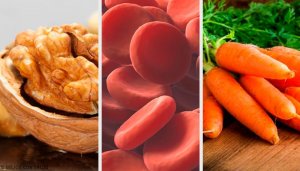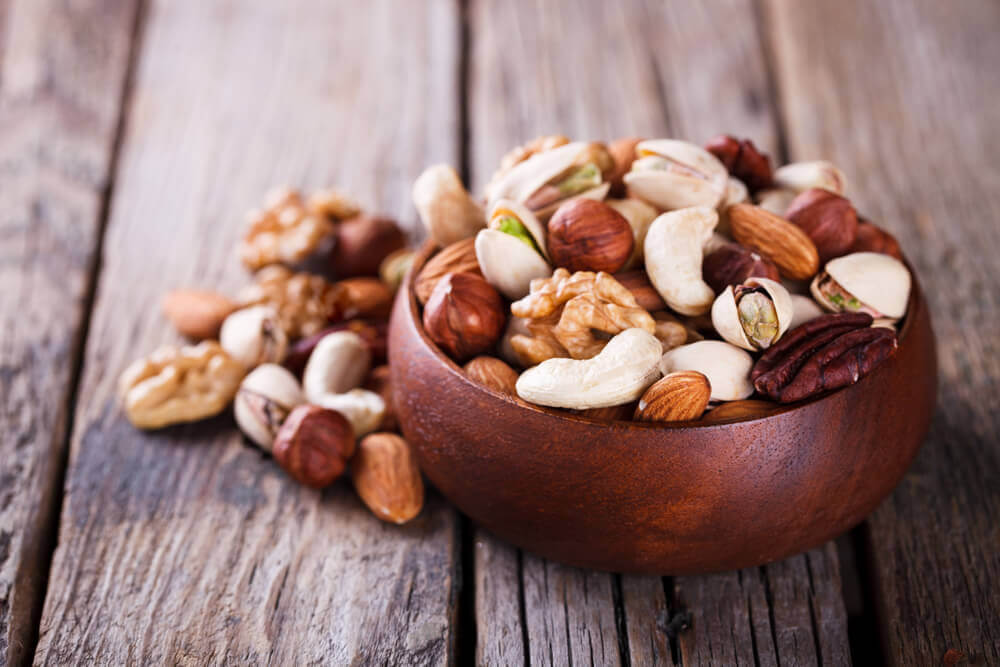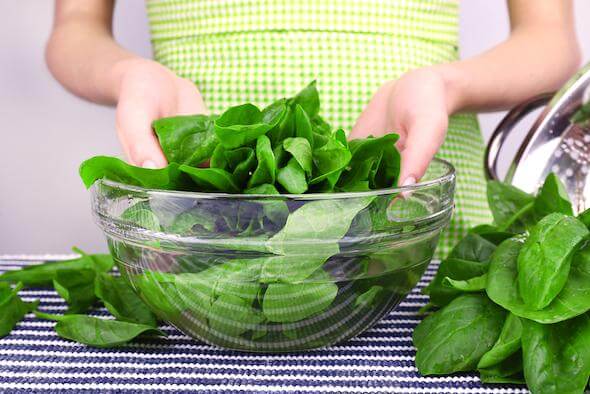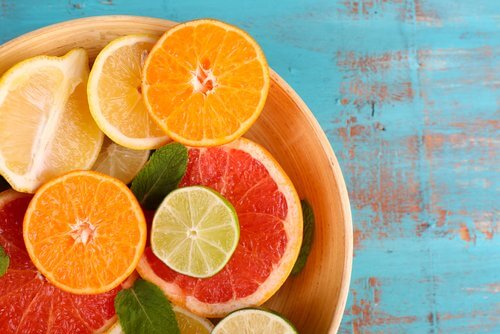How to Increase Red Blood Cells

Red blood cells are a major component of the makeup of your blood. Therefore, it’s essential to keep them at healthy levels. However, it’s important to understand how they work before knowing how to increase them naturally.
Also called “erythrocytes”, these the cells you have most in your blood. Their main component is hemoglobin and they obtain metabolic energy through lactic fermentation.
Here are some interesting facts about blood:
- Red blood cells live approximately 100 or 120 days. After that time, the bone marrow produces another “group” of erythrocytes.
- Each molecule of hemoglobin has 4 iron atoms which bind to the oxygen molecules.
- Each erythrocyte is 33 percent hemoglobin.
- Normal values of hemoglobin are 14 g./dl. in women and 15.5 g./dl. in men.
- Red blood cells eliminate carbon dioxide.
See also: Increase Red Blood Cell Count with These Natural Remedies
How to increase red blood cells
In order to increase them in an easy, healthy, and natural way, we recommend making some changes in your diet.
Eating foods rich in iron allows your body to rebuild and replace lost nutrients. Iron increases red blood cells and also helps them fulfill their function.
1. Consume foods that are rich in iron

- Egg yolks
- Meat (liver)
- Legumes (lentils, beans)
- Vegetables (spinach, kale)
- Nuts (plums and raisins)
2. Consume more copper to get more red blood cells
Adults need between 8 and 18 mg. of this mineral every day. Women need more than men during their reproductive years since they lose copper during menstruation.
It’s an essential nutrient for cells to access iron. The foods that contribute the most are nuts, beans, liver, poultry, and more.
3. Get more folic acid

In addition, it plays an essential role in the function of DNA. About 400 mcg. is recommended for women during their reproductive years and 600 mcg. when they’re pregnant.
So, where can you get folic acid? Mainly from whole grains, beans, nuts, and leafy green vegetables such as spinach or Swiss chard.
Also read: Learn About the Properties of These Ten Nuts
4. Get more vitamin A for more red blood cells
Vitamin A, also called “retinol”, is a very important compound for the development of red blood cell stem cells in bone marrow.
It ensures hemoglobin is processed by allowing iron in. Among the foods that provide the most vitamin A are citrus, carrots, zucchini, and green leafy vegetables.
5. Increase your vitamin C intake

This nutrient has many properties such as strengthening your immune system and preventing infections and various diseases.
In addition, vitamin C stimulates the body’s ability to absorb iron and, consequently, increases the amount of these cells. Citrus fruits are the ones that provide most of this vitamin.
6. Incorporate more vitamin B12
A good amount of this nutrient favors the production of erythrocytes in bone marrow and increases their presence in the blood. In order to provide your body with vitamin B12, we recommend you consume these foods:
- Eggs
- Veal
- Wheat germ
- Brewer’s yeast
- Mushrooms
- Soy (in any form)
- Fatty fish (salmon, sardines, tuna, trout, etc.)
- Dairy products (milk, yogurt and cheese, better if they’re skim and sugar free)
7. Exercise

Exercise is essential to having health iron levels and for your overall quality of life. Routines that include at least a few minutes of cardio (running, jogging, cycling, etc.) are recommended because they favor oxygenation of the entire body.
8. No smoking
Smoking is one of the worst habits people have, especially taking into account that nicotine and other chemicals present in cigarettes reduce oxygen and don’t allow adequate blood flow.
In short, smoking “squeezes” blood vessels and hinders the work of red blood cells.
9. Drink less alcohol for more red blood cells

In addition, alcohol produces immature red blood cells without enough hemoglobin. Therefore, drinking too much alcohol is another habit that’s harmful to your health and has a negative impact on erythrocyte levels.
10. Get routine checkups
Go at least once a year to get complete blood tests. With a sample, it’s possible to analyze the general conditions and the levels of not only your red blood cells but also of cholesterol, iron, urea, creatinine, glucose, etc.
Consulting your doctor is essential
It’s very important to track data that’s outside of normal levels. Finally, if there’s any disorder or irregularity, your physician will prescribe the most appropriate treatment to resolve it.
All cited sources were thoroughly reviewed by our team to ensure their quality, reliability, currency, and validity. The bibliography of this article was considered reliable and of academic or scientific accuracy.
- Cardero, Y., Sarmiento, R., Selva, A. (2009). Importancia del consumo de hierro y vitamina C para la prevención de anemia ferropénica. MEDISAN, 13(6). http://scielo.sld.cu/scielo.php?script=sci_arttext&pid=S1029-30192009000600014&lng=es.
- De Paz, R., Hernández-Navarro, F. (2006). Manejo, prevención y control de la anemia megaloblástica secundaria a déficit de ácido fólico. Nutr Hosp, 21(1), 113-119. https://scielo.isciii.es/scielo.php?script=sci_arttext&pid=S0212-16112006000100019
- Gómez-Álvarez, P. (2004). El hierro en la alimentación. Farmacia Profesional, 18(2), 54-57. https://www.elsevier.es/es-revista-farmacia-profesional-3-articulo-el-hierro-alimentacion-13057675.
- Hernández, M., Panizo, C., Navas-Carretero, S., Martínez-Hernández, J., et al. (2010). Anemia ferropénica: estrategias dietéticas para su prevención. Revista Española de Nutrición Humana y Dietética, 14(2), 67-71. Consultado el 28 de marzo de 2023. https://www.elsevier.es/es-revista-revista-espanola-nutricion-humana-dietetica-283-articulo-anemia-ferropenica-estrategias-dieteticas-su-X2173129210523373.
- Huang, M., Ye, C., Liu, L. L., Tian, C., Yan, W. J., Ye, Z. L. (2021). The Comparison of Iron Deficiency Anemia Rat Treated with Hydroxypropyl Chitosan Ferrous Ion Complex and Ferrous Sulfate. Zhongguo Shi Yan Xue Ye Xue Za Zhi, 29(3):853-859. https://pubmed.ncbi.nlm.nih.gov/34105483/
- Medlineplus (s.f.). Anemia perniciosa. Consultado el 6 de abril de 2023. https://medlineplus.gov/spanish/ency/article/000569.htm.
- Medlineplus (s.f.). Hierro en la dieta. Consultado el 6 de abril de 2023. https://medlineplus.gov/spanish/ency/article/002422.htm
- Medlineplus (s.f.). Tomar suplementos de hierro. Consultado el 6 de abril de 2023. https://medlineplus.gov/spanish/ency/article/007478.htm
- Medlineplus (s.f.). Vitamina A. Consultado el 6 de abril de 2023. https://medlineplus.gov/spanish/ency/article/002400.htm
- Ramírez-Izcoa, A., Díaz-Valle, D., Chiang-Alvarado, E., Fu-Carrasco, L., Sabio, H. (2016). Anemia sideroblástica. Rev Hematol Mex, 17(4), 287-292. https://www.medigraphic.com/cgi-bin/new/resumen.cgi?IDARTICULO=69416
- Rossel, Y. (2014). Efecto del ion cobre sobre la función mitocondrial durante la eritropoyesis. Universidad Andrés Bello. https://repositorio.unab.cl/xmlui/handle/ria/4521.
- Suárez, M. (2003). Ácido Fólico: nutriente redescubierto. Acta Méd Costarric, 45(1), 05-09. http://www.scielo.sa.cr/scielo.php?script=sci_arttext&pid=S0001-60022003000100002&lng=en.
This text is provided for informational purposes only and does not replace consultation with a professional. If in doubt, consult your specialist.








